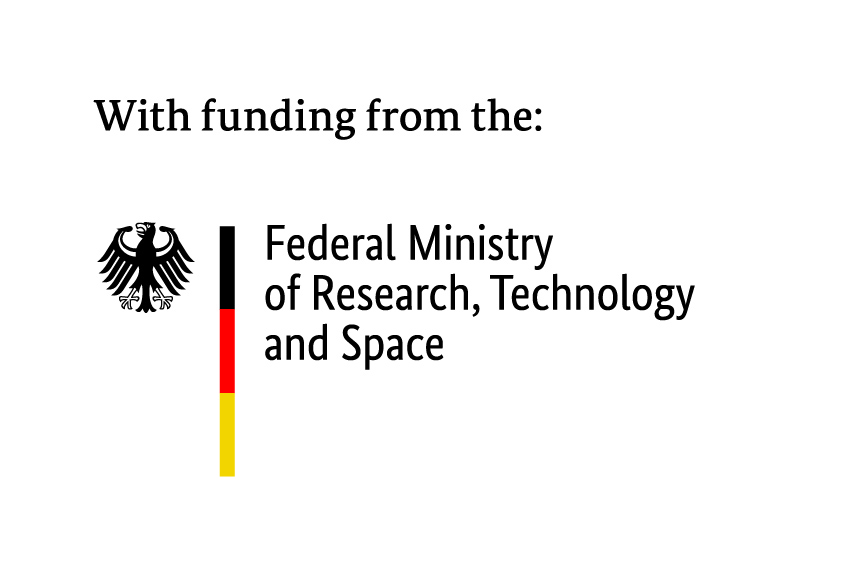Lecture Series Summer 2025: Expanding Science and Technology Studies

We are happy to announce that the lecture series of the summer term 2025 will continue to explore the topic of expanding science and technology studies.
Over the decades, science and technology studies (STS) have developed many different approaches for investigating the relationship between science and society and to dig deep into the cultures of research, the ways science is conducted. For example, scholars have investigated the local cultures and politics underlying processes of knowledge production, the biases and gender divisions informing the organization of academic institutions, or the reception of future technological visions in different publics. There is a rich knowledge. However, it seems that science studies are not well prepared for the transformation challenge, a present-day topic that also affects science, knowledge societies, and the spread of knowledge. Against this background, the purpose of this lecture series is to understand first the transformation challenge and its consequences for science studies and second to explore different pathways of future science studies.
The lecture series will begin on May 7, 2025 with a talk by Nina Frahm entitled “Innovation as Res Publica: The New Governance of Technoscience and its Politics”.
For an overview of the dates and speakers, please see the program.
The lecture series will take place every second Wednesday from 5 to 6.30 pm, in the lecture hall of the center and online via zoom.
If you would like to attend the lectures, please send a short email to events@khk.rwth-aachen.de.
Program
| May 7, 2025 | Nina Frahm (Aarhus University): Innovation as Res Publica: The New Governance of Technoscience and its Politics |
| May 21, 2025 | Hannah Star Rogers (KHK c:o/re fellow): Expanding STS: Art, Science, and Technology Studies (ASTS) |
| June 18, 2025 | Bart Penders (Maastricht University): Metascience as the Social Hygiene Movement of Science Studies |
| July 2, 2025 | Daniela Wentz (KHK c:o/re fellow): Data Behaviorism: A History |
| July 16, 2025 | Carsten Reinhardt (Bielefeld University): How Uncertainty is Rendered Residual |
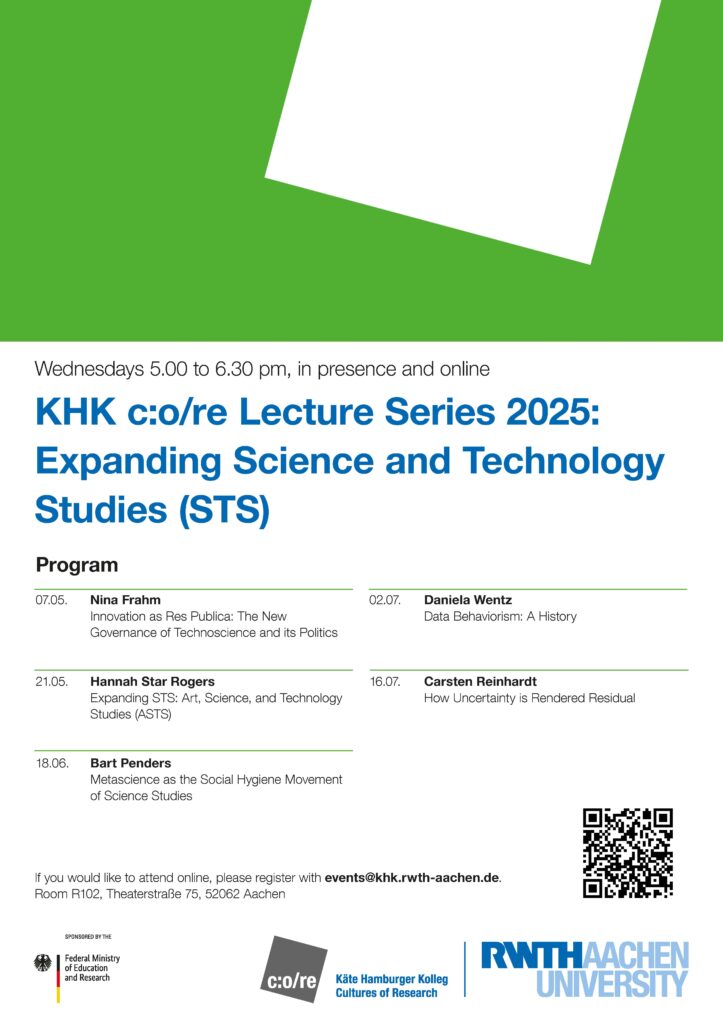
Call for Papers: History and Philosophy of Computing (HaPoC) Conference
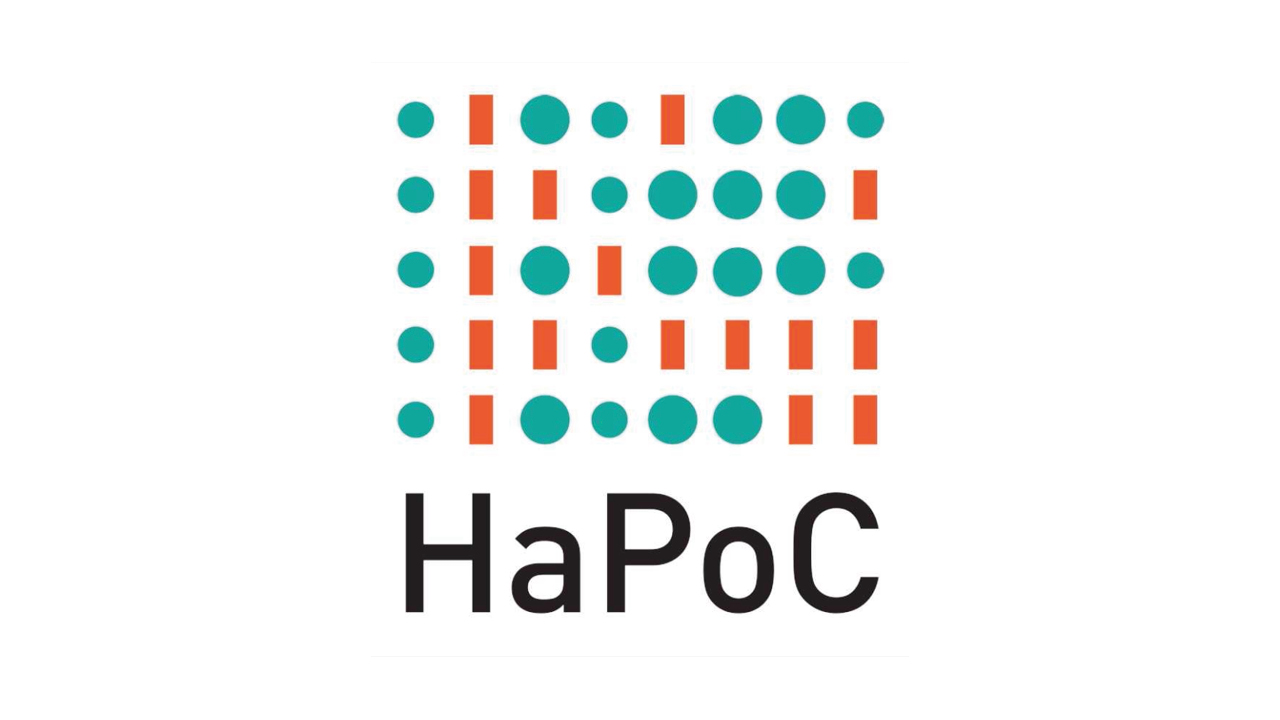
Submissions are open for the 8th edition of the History and Philosophy of Computing (HaPoC) Conference that will take place on December 17-19, 2025, at RWTH Aachen University (Germany) on behalf of the DHST/DLMPST Commission for the History and Philosophy of Computing (HaPoC).
Important dates:
- Submission deadline: June 1, 2025
- Notification of acceptance/rejection: July 31, 2025
- Conference: December 17-19, 2025
About the conference:
Since 2011, the biennial History and Philosophy of Computing (HaPoC) conference series has contributed to building an interdisciplinary community and environment to address the various facets of computing and computing technology. HaPoC aims to bring together scholars from a broad range of disciplines to discuss the past and present cultures, practices and images of computing.
We welcome contributions from researchers from different disciplinary backgrounds, such as history, philosophy, sociology, computer science and software engineering, cultural and media studies, computational sciences, design and art. We invite contributors to share their expertise in respective areas and openly engage in interdisciplinary discussions. Topics include, but are not limited to:
- Historical and philosophical dimensions of computing practices
- Social and cultural aspects of computing
- Computing and the arts
- New forms of computing, such as neuromorphic computing
- Ethical and legal aspects of computing
- Reflecting and historicizing AI
We look forward to submissions by scholars from all career stages and aim at diversity of participants in terms of demographics that include gender, career stage/track, geographical location, and institutional affiliation.
Find out more on the HaPoC website (with links to past conferences).
Submission procedure:
Please submit to hapoc2025@khk.rwth-aachen.de a 2-page proposal in PDF format containing:
- an anonymized abstract (1 page, ca. 700 words) for double-blind review
- a max. 1-page statement of your name, affiliation, research focus, academic activities and optionally publications (max. 5).
Acceptance notifications will be sent by July 31, 2025.
There are no conference fees and travel grants will be offered to early career scholars, further information will follow.
We look forward to meeting you at HaPoC-8 in Aachen!
Keynote Speakers:
Robin K. Hill, University of Wyoming, US
Alexandre Hocquet, Université de Lorraine, France
Liesbeth De Mol, Université de Lille, France
Program Committee:
Arianna Borrelli, TU Berlin and RWTH Aachen, Germany
Jianqing Chen, Washington University at Saint Louis, US
Jack Copeland, University of Canterbury, Christchurch, NZ
Beatrice Fazi, University of Sussex, UK
Gabriele Gramelsberger, RWTH Aachen, Germany
Thomas Haigh, University of Wisconsin-Milwaukee, US
Andrei Korbut, CAIS Center for Advanced Internet Studies Bochum, Germany
Alfred Nordmann, TU Darmstadt, Germany
Mitsuhiro Okada, Keio University, Tokyo, Japan
Ben Peters, University of Tulsa, US
Mate Szabo, University of Southern California, US
Local Organising Committee at RWTH Aachen University:
Gabriele Gramelsberger (philosophy of science)
Stefan Böschen (sociology of science)
Dawid Kasprowicz (philosophy of science)
Phillip Roth (science and technology studies)
Saskia Nagel (ethics of science)
Torsten Voigt (science and technology studies)
Event Announcement: Workshop “After Networks: Reframing Scale, Reimagining Connections”

We cordially invite you to the interdisciplinary workshop “After Networks: Reframing Scale, Reimagining Connections”, which will take place on April 16 and 17, 2025 at the SuperC of RWTH Aachen University. The event is organized in collaboration with Nathalia Lavigne, who is currently a fellow at the KHK c:o/re.
Abstract
In the last few years, we have witnessed an unprecedented crisis in the way social interactions have merged with the informational space. The current “space of the world”, as the artificial space of social media platforms has been called (Couldry, 2025), is designed and controlled by corporations with strictly business purposes, putting at risk a sense of community in a devastating way. How can the future of the internet be imagined beyond social media platforms? What can we learn from other networks or other notions of space devised by artists? In which ways can digital communication be grounded on equity, common ownership and sustainability? These are some of the questions that will be addressed during the workshop.
The interdisciplinary program, combining art and internet studies, puts together different approaches on how science and technology are configured in other spheres beyond academia. Gathering scholars, artists and activists who have been working on disruptive understanding of digital systems, this two-day event will discuss alternative ways to reimagine connections in contrast to increasingly monopolistic and financially motivated social media platforms.
The workshop includes an opening artist talk with Eduardo Kac, a keynote speech with the media scholar Lori Emerson, who is launching her new book “Other Networks: A Radical Technology Sourcebook” (Anthology Editions, 2025) and a round table focused on a community-centered perspective of networks.
The full program can be found in this document.
If you would like to attend, please register with: events@khk.rwth-aachen.de
Speakers
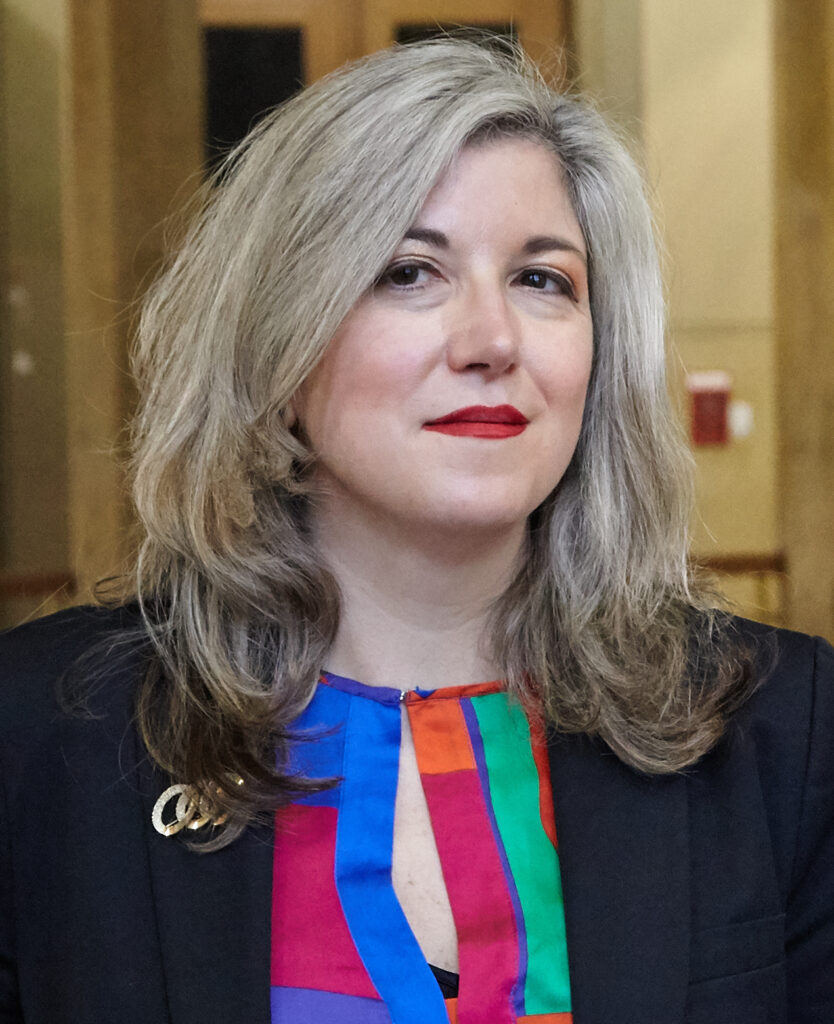
Tatiana Bazzichelli is the founder and director of the Disruption Network Lab, a non-profit organisation in Berlin that explores the intersection of politics, technology and society (www.disruptionlab.org). Her work focuses on whistleblowing, network culture, art and activism. Since September 2023 she is the director of the Disruption Network Institute: Investigating the Kill Cloud, a new centre for investigation and empirical research into the impact of artificial intelligence on new technologies of war, automated weapons and networked warfare (https://disruption.institute). She is the author of Whistleblowing for Change (2021), Networked Disruption (2013), Disrupting Business (2013) and Networking (2006). She was a member of the Transparency International Anti-Corruption Award Committee 2020. In 2019-2021, she was appointed by the Federal Government and the City of Berlin as a jury member for the Hauptstadtkulturfonds (Capital Cultural Fund), and in 2020-2023 she was a jury member for the Kulturlichter Prize, a new award for digital cultural education in Germany. For three years until 2014, she was a curator at the transmediale art & digital culture festival in Berlin, where she developed the year-round programme reSource transmedial culture Berlin and curated several conferences, workshops and art projects.
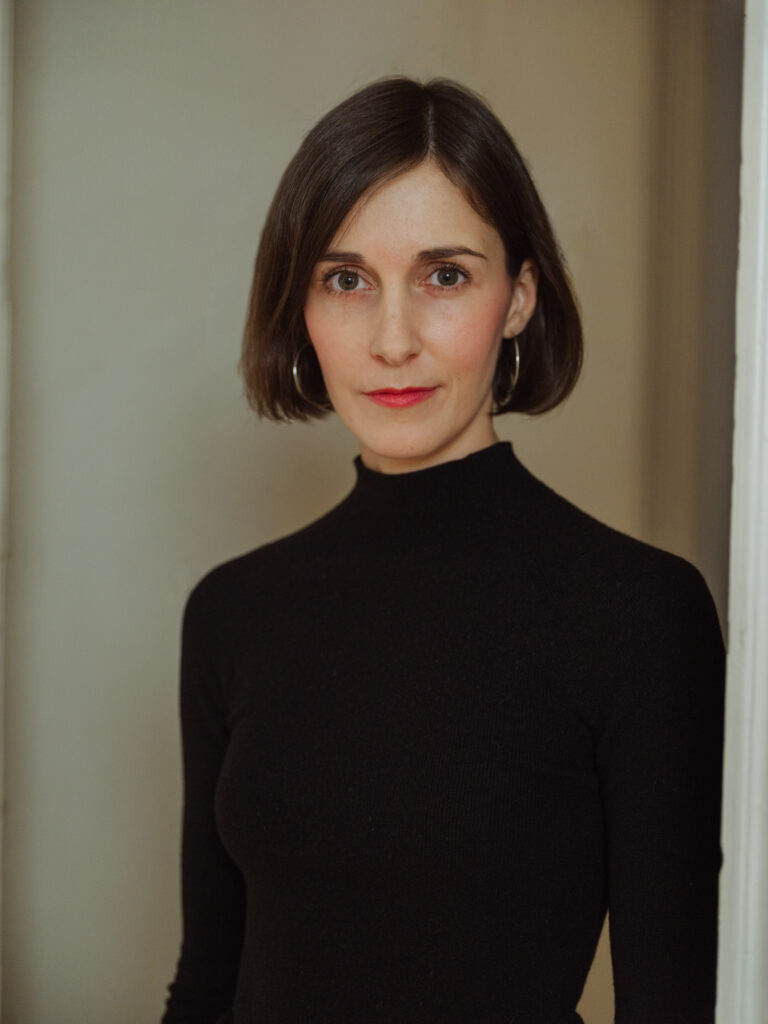
Lisa Deml [she/her] is an independent curator and writer based in Berlin. Initially trained as a journalist, she subsequently worked for public institutions and non-profit organisations, including Haus der Kulturen der Welt (HKW), Berlin; Haus der Kunst, Munich; and Ashkal Alwan, Beirut. Most recently, she curated the exhibition ‘Like Snow in the Middle of Summer’ with works by the Lebanese artist Rabih Mroué as part of Manifesta 15 (Granollers, 2024) and the international symposium ‘After Memory’ in collaboration with Víctor Fancelli Capdevila and Nathalia Lavigne and in partnership with ZKM | Center for Art and Media (Karlsruhe, 2024). As of March 2025, Marie-Sophie Dorsch and her are joint artistic directors of Halle für Kunst Lüneburg e.V.

Lori Emerson is an Associate Professor of Media Studies and Associate Chair of Graduate Studies at the University of Colorado Boulder. She is also the Founding Director of the Media Archaeology Lab. Her most recent book is Other Networks: A Radical Technology Sourcebook (Anthology Editions, 2025), now available for pre-order. She is also co-author of The Lab Book: Situated Practices in Media Studies (with Darren Wershler and Jussi Parikka), author of Reading Writing Interfaces, and co-editor of three collections. Her research focuses on uncovering crisis points in past media, or, points at which there was the possibility, never fully realized, for technologies to become “other” than what they are now. Lori Emerson also tries to undo established narratives of how contemporary technologies came to be by looking at artists and writers’ experiments with, for example, network technologies.
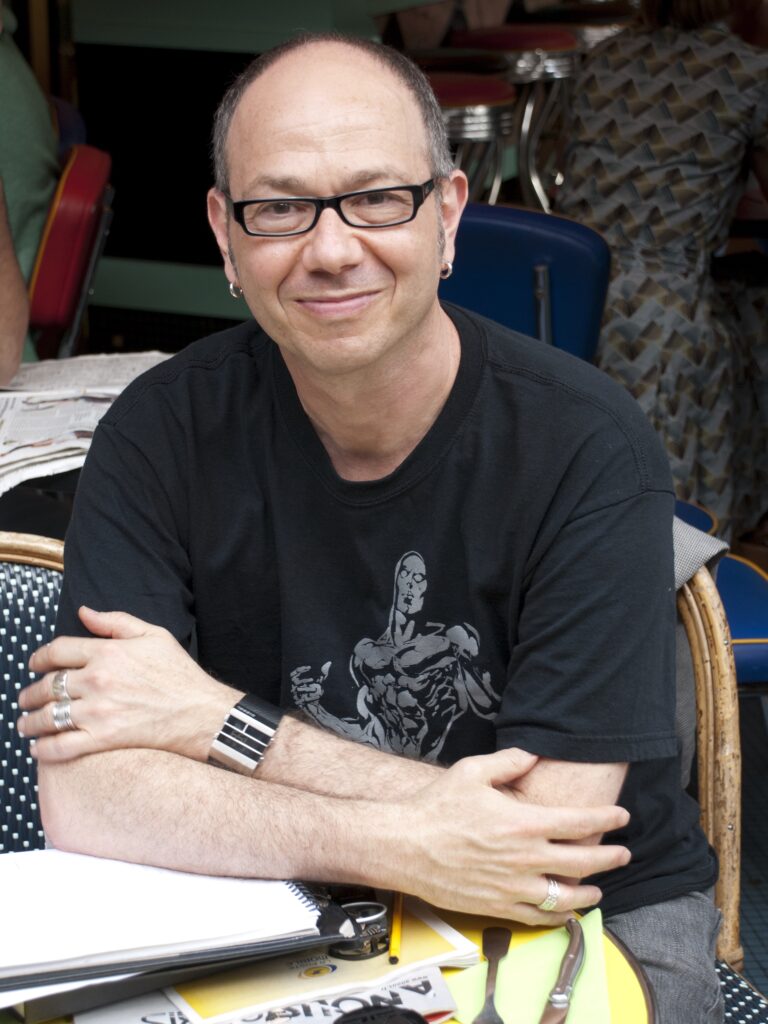
Eduardo Kac is internationally recognized for his groundbreaking work in contemporary art and poetry. In the early 1980s, Kac created digital, holographic and online works that anticipated the global culture we live in today, composed of ever-changing information in constant flux. In 1997 the artist coined the term “Bio Art,” igniting the development of this new art form with works such as his transgenic rabbit GFP Bunny (2000) and Natural History of the Enigma (2009), which earned him the Golden Nica, the most prestigious award in the field of media art. GFP Bunny has become a global phenomenon, having been appropriated by major popular culture franchises such as Sherlock, Big Bang Theory and Simpsons, and by writers such as Margaret Atwood and Michael Crichton. In 2017, Kac created Inner Telescope, a work conceived for and realized in outer space with the cooperation of French astronaut Thomas Pesquet. In 2024, Kac’s Ágora flew to deep space aboard the Centaur rocket and is now in a perpetual heliocentric orbit. Kac’s Adsum landed on the Moon in 2025. Kac’s singular and highly influential career spans poetry, performance, drawing, printmaking, photography, artist’s books, early digital and online works, holography, telepresence, bio art, and space art. Read more.

Nathalia Lavigne [she/her] works as an art researcher, writer and curator. Post-doctoral fellow at MAC USP, she has a PhD from FAUUSP (University of São Paulo), with a dissertation entitled “(De) musealizations and practices of countercollecting in instantaneous archives.” During her PhD, she was a visiting researcher at The New School (NYC) and Humboldt Universität zu Berlin. She also has a master’s degree in Critical Theory and Cultural Studies from Birkbeck, University of London. Her research interests involve topics such as social documentation and circulation of images on social networks, cultural criticism, museum and media studies and art and technology. She writes for several art magazines, including Artforum, Contemporary &, ZUM (Instituto Moreira Salles) and Humboldt (Goethe). As a curator, she has held exhibitions such as “Against, Again: Art Under Attack in Brazil” (2020), at Anya and Andrew Shiva Gallery (John Jay College, CUNY, NYC) and “Tactics of Disappearance” (2021), at Paço das Artes (São Paulo). Since July 2024, she is a fellow at the KHK c:o/re.

Geert Lovink is a Dutch media theorist, internet critic and author of Uncanny Networks (2002), Dark Fiber (2002), My First Recession (2003), Zero Comments (2007), Networks Without a Cause (2012), Social Media Abyss (2016), Organization after Social Media (with Ned Rossiter, 2018), Sad by Design (2019) and Stuck on the Platform (2022). He studied political science at the University of Amsterdam (UvA) and received his PhD from the University of Melbourne. In 2004 he founded the Institute of Network Cultures (www.networkcultures.org) at the Amsterdam University of Applied Sciences (HvA). His centre organizes conferences, publications and research networks such as Video Vortex (online video), The Future of Art Criticism and MoneyLab (internet-based revenue models in the arts). Recent projects deal with digital publishing experiments, critical meme research, participatory hybrid events and precarity in the arts. From 2007-2018 he was media theory professor at the European Graduate School. In December 2021 he was appointed Professor of Art and Network Cultures at the UvA Art History Department. The Chair (one day a week) is supported by the HvA. Since early 2022 he is involved in support campaigns for Ukrainian artists, in particular UKRAiNATV, a streaming art studio network, operating out of Krakow.
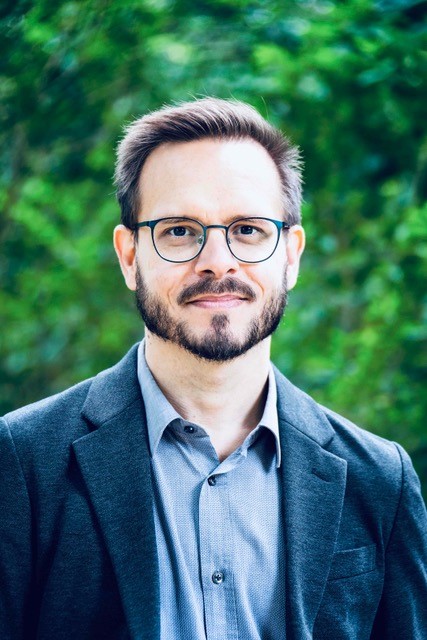
João C. Magalhães is an Assistant Professor in Media, Politics, and Democracy at the University of Groningen in the Netherlands, and an incoming Senior Lecturer in AI and Trust at the University of Manchester, UK. His work concerns the multiple intersections of platforms and politics. In 2024, he started a 4-year project on the (re)making of content moderation, funded by a Veni grant from the Dutch Research Council.

Alex Wermer-Colan is a co-founder, long-time volunteer, and Executive Director of Philly Community Wireless. A resident of North Philadelphia, Alex has contributed to all facets of Philly Community Wireless’ growth and operations, including conducting installs throughout the coverage area, engaging in community outreach with residents and organizations, training and teaching volunteers and staff, overseeing software and networking infrastructure, and developing policies and fundraising strategies to sustain the organization. In addition to his work with Philly Community Wireless, Alex works as the Academic and Research Director at Temple University Libraries’ Loretta C. Duckworth Scholars Studio, where he supports research and teaching with emerging technologies across the disciplines. Alex holds a PhD in English literature with a focus on critical theory from the City University of University of New York’s Graduate Center. Alex serves as the Managing Editor for the Programming Historian in English, and his writing, translations, and dramaturgical work have in such publications as The Los Angeles Review of Books, New Directions, Harpers, New Criterion, PAJ: A Journal of Performance and Art, Twentieth Century Literature, The Yearbook of Comparative Literature, dh+lib, Debates in the Digital Humanities, The Journal of Interactive Technology and Pedagogy, Indiana University Press, and Lost & Found: The CUNY Poetics Document Initiative.

Bruna Zanolli is a specialist in community-centered connectivity and digital care, grounded in intersectional feminism, social and climate justice, and popular education. With 15+ years of experience and research in community radio, autonomous networks, and local technologies, she works to advance public-interest technologies. Bruna supports community networks in the Global South through the Local Networks project (in collaboration with Rhizomatica and APC) and contributes to Brazil’s telecom regulator Anatel on the Community Networks Committee, advocating for inclusive policies and sustainable funding. A Mozilla Open Web Fellow (2018/19) alumni, Bruna is part of the Transfeminist Digital Care Network and APC’s Feminist Internet Research Network (FIRN). She holds a master’s in Communication and Culture from MediaLab UFRJ and is a dedicated FLOSS enthusiast.
Header Image:
© Illustration of SSTV event “Still Life Alive” (by Carlos Fadon Vicente) which also included “Intercities São Paulo / Pittsburgh” from 1988, organized by the Digital Art Exchange (headed by artist Bruce Breland) [from DAX archives, Carnegie Mellon University, “Intercities Sao Paul-Pittsburgh” Jan. 25, 1988 Letter of May 31 to Breland/Kocher from Matuck FF44].
International Conference “Cultures of Research”
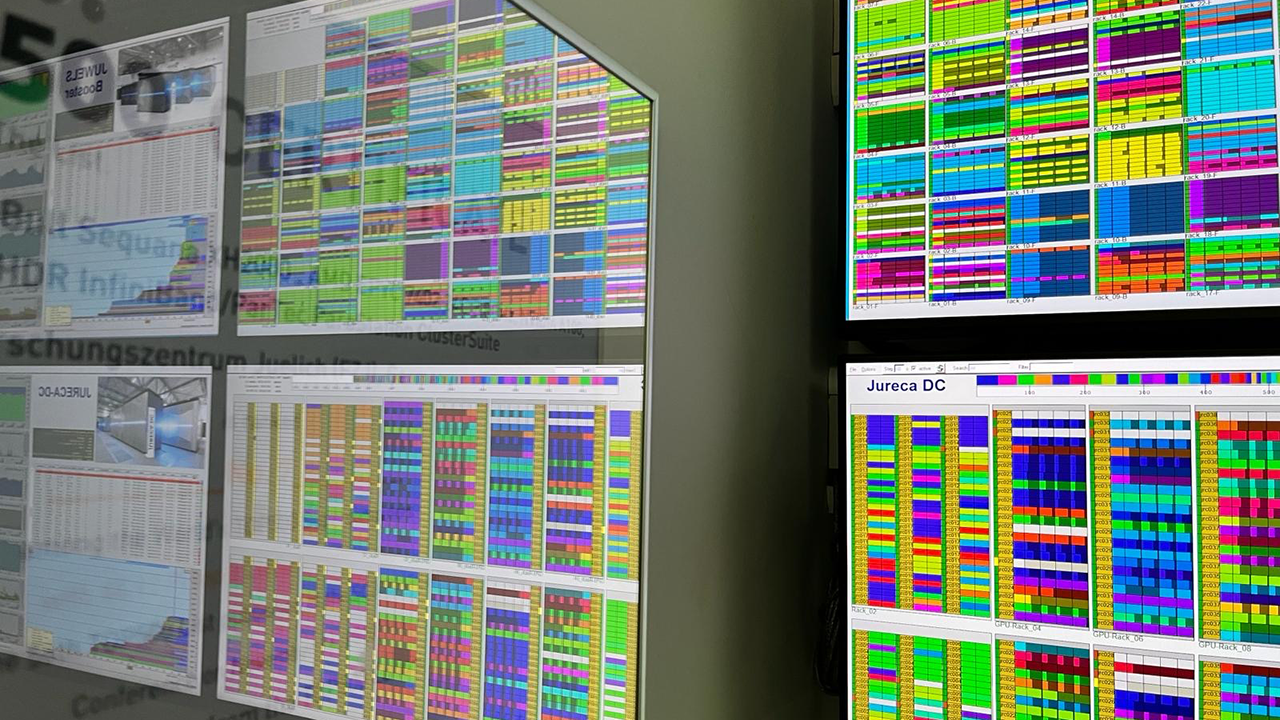
March 25 to 27, 2025, Forum M, Buchkremerstraße 1-7, 52062 Aachen
The international conference “Cultures of Research” takes stock of the first four years of the fellow program at the Käte Hamburger Kolleg: Cultures of Rearch (c:o/re).
During these years, more than fifty international fellows came to the KHK c:o/re to explore the transformation of research in its many facets. Topics such as the digitalization of science, the growing influence of AI on research practices, the organizational transformations in science, the “engineering of science”, and the historical as well as intercultural comparison of “varieties of science” have been widely discussed.
The conference will focus the discussions on these topics in various panels with current and alumni fellows as well as members of the scientific advisory board of the KHK c:o/re.
A detailed program with all speakers and titles can be found in this document.

Program
| Time | Tuesday, 25th | Wednesday, 26th | Thursday, 27th |
| 09:00-12:00 | Welcome and Introduction | Panel 4 “Digitalisation of Science” Lecture by Franck Varenne | Panel 7 “Expanded STS” & Euregio |
| Panel 1 “Historicizing Science” Lecture by Hans-Jörg Rheinberger | |||
| Lunch | |||
| 13:00-15:30 | Panel 2 “Dealing with Complexity” Lecture by Mary Morgan | Panel 5 “Varieties of Science” Lecture by Alfred Nordmann | Panel 8 “Art and Research” |
| Coffee break | |||
| 16:00-18:00 | Panel 3 “Lifelikeness” | Panel 6 “Freedom of Research” Lectures by Frederik Stjernfelt & Steve Fuller | Departure |
| 18:00-20:00 | Evening Keynote Lecture by Ad Aertsen | Conference Dinner | |
| Reception (finger food) |
Keynote by Hannah Star Rogers at the Materializing Methods Symposium

On February 20, 2025, KHK c:o/re Fellow Hannah Star Rogers will deliver the keynote at the Materializing Methods symposium at Durham University.
Materializing Methods is a one-day symposium hosted by the Discovery Research Platform for Medical Humanities at Durham University, in collaboration with The Cultural Negotiation of Science research group (Northumbria University) and Hannah Star Rogers (Medical Museion, University of Copenhagen).
What can practice-based research tell us about working with disciplinary cultures that are not our own? With a focus on how contemporary art practices engage with expert cultures in health and biomedicine, this symposium foregrounds questions of method, practice and process in relation to interdisciplinary inquiry. Critical art practices are knowledge-producing practices that shape interdisciplinary research agendas.

Photo credit: Molly Renda
If you are interested in participating, please visit the event website.
Freedom of Research Summit: Call for Contributions
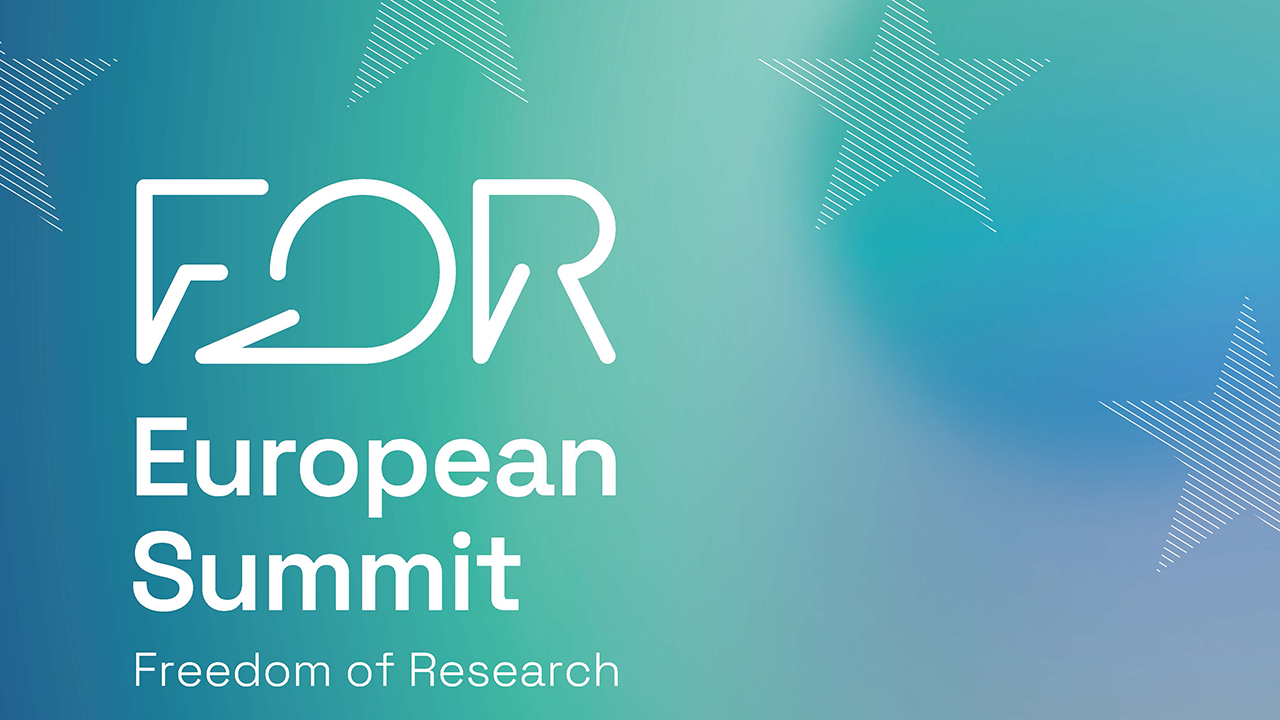
On November 5 and 6, 2025, the second edition of the Freedom of Research Summit will take place in Aachen, jointly organized by the Charlemagne Prize Foundation, RWTH Aachen University’s Knowledge Hub, and the Käte Hamburger Kolleg: Cultures of Research (c:o/re).
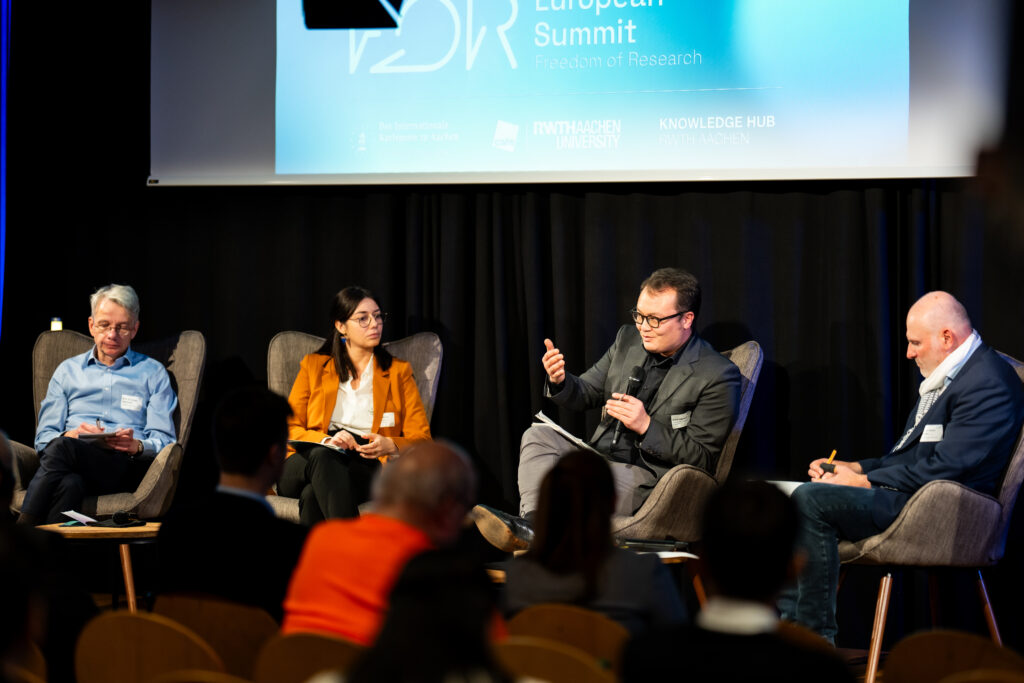
With the topic “Europe in Times of Division”, the Summit aims to address the complex challenges facing our continent today – ranging from political polarization and geopolitical tensions to economic disparities and environmental divides. How can we navigate these challenges and create a resilient framework for future developments?
This year, we invite you to take an active role in shaping the Symposium. We encourage you to participate in our Call for Contributions to explore the role of science as a bridge-builder in Europe within your specific research field or area of work and to reflect on the importance of academic freedom in this context. The Summit’s Symposium will take place on November 6, 2025 at the SuperC of RWTH Aachen University.
Please have a look at the Call for further information.
The application deadline is March 31, 2025.



If you are interested in a recap of last year’s symposium, here is a blog post.
Lab-Talk: KHK c:o/re meets E.ON Energy Research Center

On January 29, 2025, a group of fellows and staff members visited the Institute for Automation of Complex Power Systems at the E.ON Energy Research Center at RWTH Aachen University.
Professor Ferdinanda Ponci and her team gave us insights into their research topics and we learned about exciting EU projects such as EnerTEF. We also enjoyed a tour of the ACS lab and discovered many common interests ranging from AI and AI bias to hardware-in-the-loop topics.
As part of the Lab-Talks, KHK c:o/re fellows and staff visit various institutes at RWTH Aachen University to promote networking and interdisciplinary collaboration between STEM projects and the social sciences and humanities.




photo credits: Jana Hambitzer
Towards a Philosophy of Digitality: Gabriele Gramelsberger was awarded the K. Jon Barwise Prize
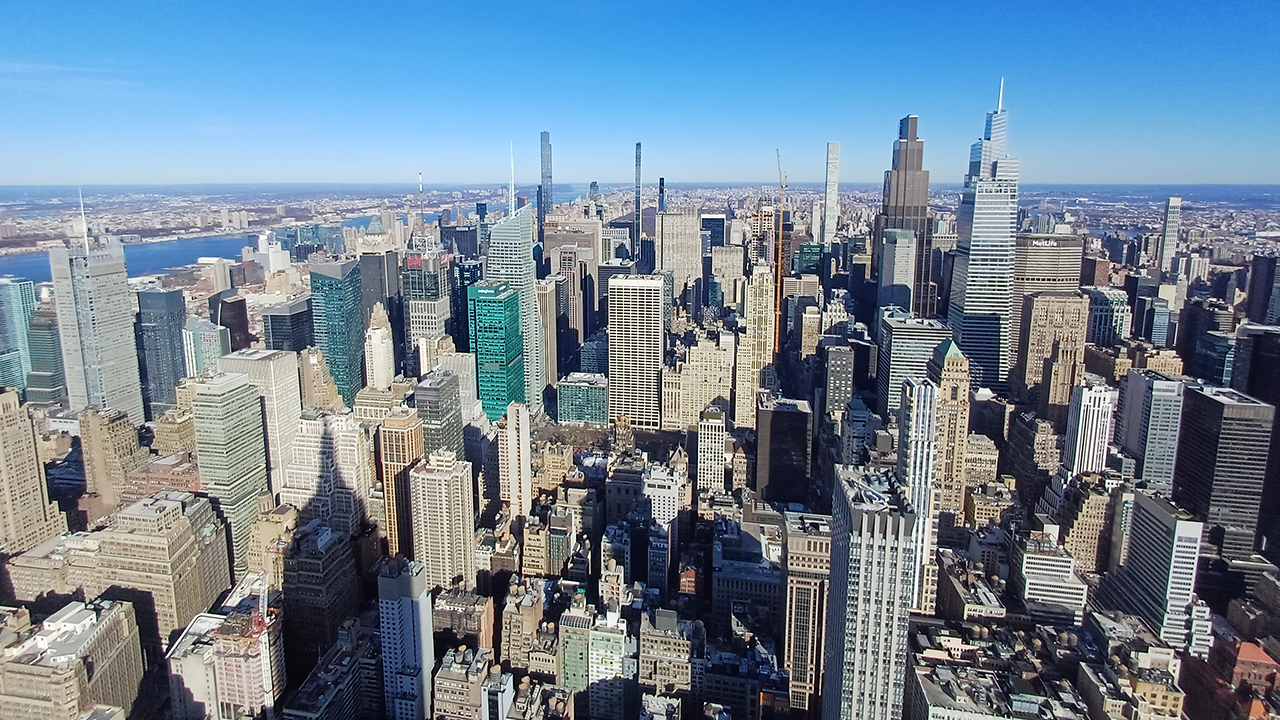
DAWID KASPROWICZ
On Thursday, January 9, 2025, KHK c:o/re director Gabriele Gramelsberger gave a lecture at the 121st annual meeting of the American Philosophical Association (APA), Eastern Division, in New York. Her lecture, titled “Philosophy of Digitality: The Origin of the Digital in Modern Philosophy”, was given in relation to the award of the K. Jon Barwise Prize by the APA in 2023 for her significant and sustained contributions to philosophy and computing.
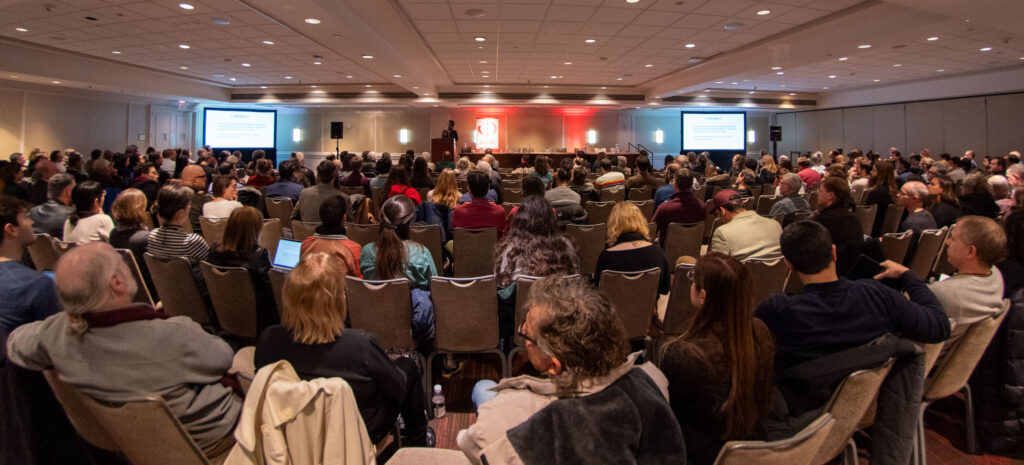
photo credits: American Philosophical Association
Robin Hill, computer scientist from the University of Wyoming and a longtime member of the APA, introduced Prof. Gramelsberger and chaired through the session. Named after the American mathematician and philosopher K. Jon Barwise, the prize honors since 2002 scholars for their lifelong efforts in the disciplines of philosophy and computing, especially in the fields of artificial intelligence and computer ethics. Next to Prof. Gramelsberger, who received the prize for 2023, the Israelian philosopher Oron Shagrir from the Hebrew University Jerusalem received the Barwise Prize for 2024. Among the former winners of the prize are well-known philosophers such as Daniel Dennett, David Chalmers or Jack Copeland. Gabriele Gramelsberger was the third woman who won this award.
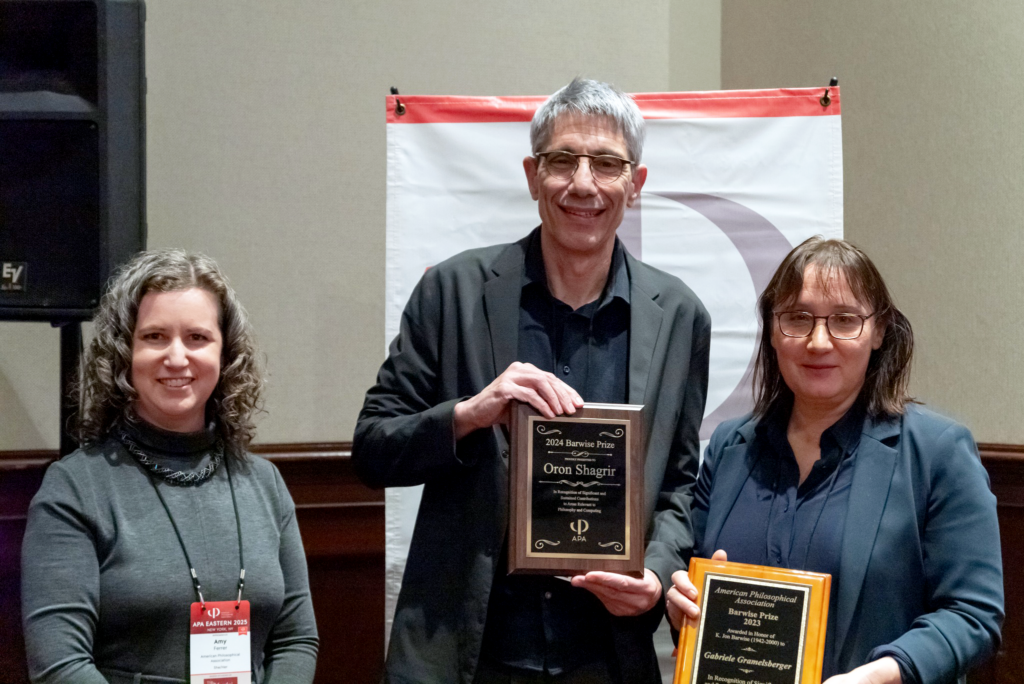
Prof. Gramelsberger presented two parts in her lecture: in the first, she introduced her conception of a philosophy of digitality since the modern age, and in the second, she highlighted some current challenges for philosophers to describe digitality as a socio-cultural phenomenon. It is not common in philosophy to relate the digital to thinkers of the modern age. In doing so, Prof. Gramelsberger began her talk with a schema how a prehistory of the digital could be written – a history that does not start with machines and technological objects, but with a reinterpretation of writings such as René Descartes’ Discourse de la méthode from 1637. In this classical book, Descartes did not only introduce a procedure how to separate right from wrong in scientific judging. Following Prof. Gramelsberger, he was also one of the first who systematically described thinking as a cognitive process, a process which could be distinguished in several steps that build up on each other. Instead of only considering the right inference from the premises (as done in syllogistic reasoning), Descartes also conceived thinking as a series of discrete steps that one has to execute appropriately to split a bigger problem into several smaller ones. It is this discrete and procedural way to describe thinking that we also find in the papers of the AI-pioneers Allan Newell and Herbert Simon and their General Problem Solver, as Prof. Gramelsberger argued.
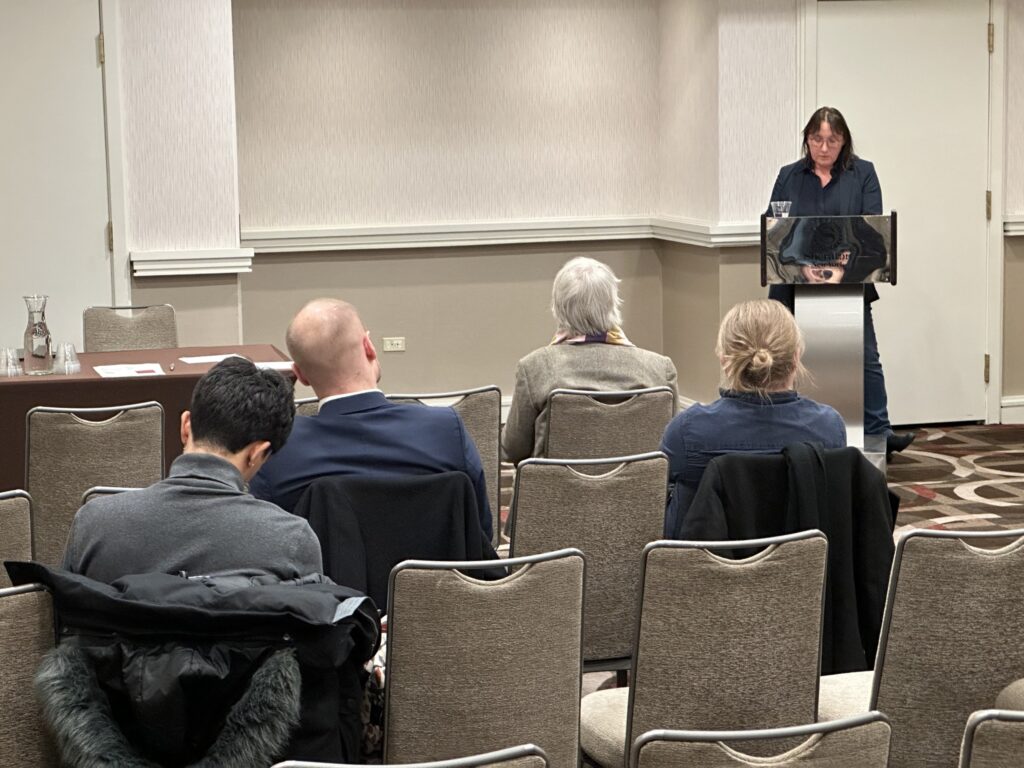
While Descartes introduced the first discretization of cognitive processes, Leibniz went further to describe cognitive operations with a symbolic system. This artificial language consisting of arithmetic, algebra and logic should constitute the adequation between the object and the concept, between the relations of objects and the judgments. In this sense, Leibniz not only introduced the symbolic order to formulate possible experiences in the real world, he was also able to replace the qualitative and substance-oriented with a formal and quantitative one. This equivalence of being with the formal calculus allowed him to extend the conditions of possible experiences into the transcendence of mathematical operations. From here, Prof. Gramelsberger argued, it is not far anymore to rule-based cognitive operations that could also be externalized – and this is exactly what pioneers of digital computers such as C. Babbage did in the 19th century (see also in Gramelsberger 2023, p. 40-44).
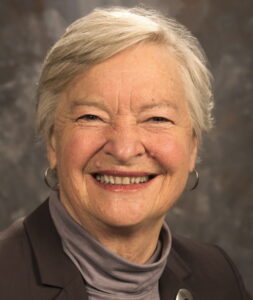
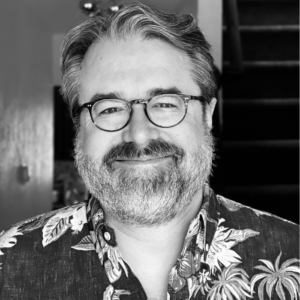
The execution of such mechanized operations happens today a billion times in a couple of seconds. Taking into consideration, as Prof. Gramelsberger highlighted, that there are more than five billion smartphones in the world, a philosophy of digitality has also to respond to digital cultures and their objects as an everyday experience of most people. In this regard, Prof. Gramelsberger presented in the second half of her talk a more critical and phenomenological approach. It is the operation of digital machines beneath our “phenomenological thresfold” that represents on the one hand a challenge for a philosophy of digitality, but on the other hand also a risk for the wellbeing of the users. In referring to the German concept of “cultural techniques” (Kulturtechniken) (Krämer and Bredekamp 2013), Prof. Gramelsberger illustrated that in cultural techniques such as writing, one always operates with discretized symbols – whether in alphabets or in the arithmetic sense. The fundamental difference with digital machines lies in the affective mode by which they address us, as the Barwise-awardee explained. Most often, the goal of social media communication would be to raise emotions, but the resources to do so are affects that are triggered beneath our threshold of intentional attention. At the end of her talk, Prof. Gramelsberger pointed sharply out to a threatening constellation where man has lost its ability to be “eccentric”, as the German philosopher Helmuth Plessner called it. Instead, in the age of an affective smartphone culture and massive data-storage (often owned by private companies), man becomes centric again and stays in one place to go through a myriad of affective-loaded communications that keep him in a loop to create even more data.
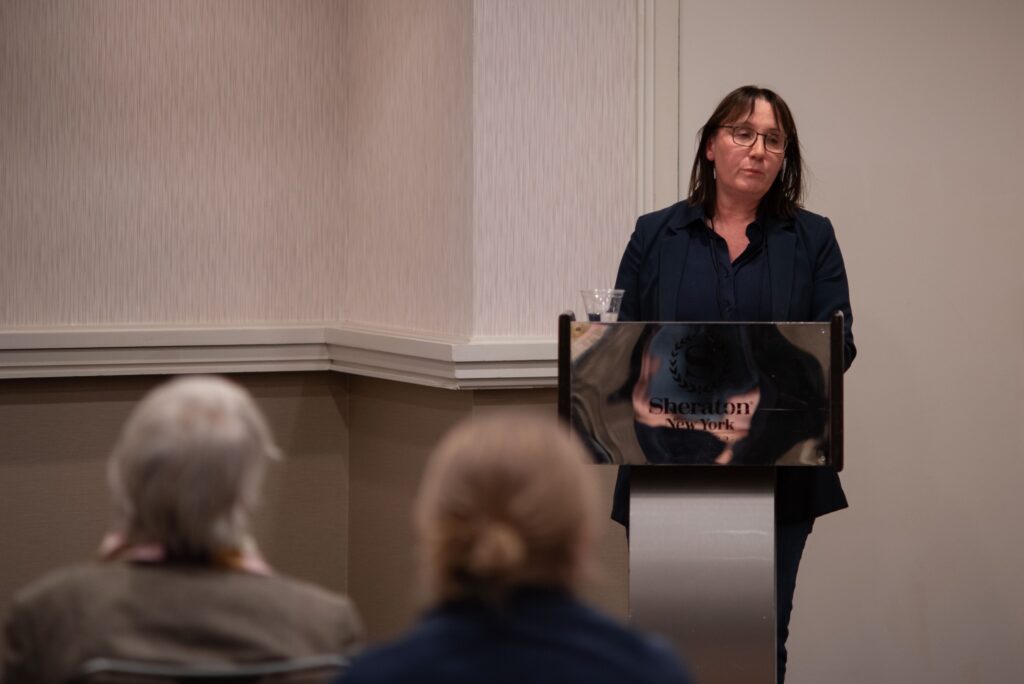
In his response to Prof. Gramelsberger’s talk, Zed Adams from the New School for Social Research in New York extracted three leading questions: These questions highlighted the relation of the analog and the digital, the question of the copy in the age of the digital, and the challenge how to describe the affective regime in our current smartphone culture. Adams offers to dig deeper into the challenge of a “Philosophy of Digitality” were also taken up vividly by the audience. Especially the distinction of affect and emotion evoked some discussions, but also the challenge how to describe the cultural impact of technologies such as AI with philosophical tools. A first answer was to find ways how to describe the less complex yet emotionally overwhelming ways we can observe in the use of social media apps. This could be a fist step to better understand how machines in the age of AI recentralize us as human beings – or decentralize us as the contingent result of data-management.
Gabriele Gramelsberger. 2023. Philosophie des Digitalen. Zur Einführung. Junius: Hamburg.
Sybille Krämer and Horst Bredekamp. 2013. Culture, Technology, Cultural Techniques – Moving Beyond Text. In: Theory, Culture & Society 30(6): 20-29. DOI: 10.1177/0263276413496287
Gabriele Gramelsberger Honored With K. Jon Barwise Prize
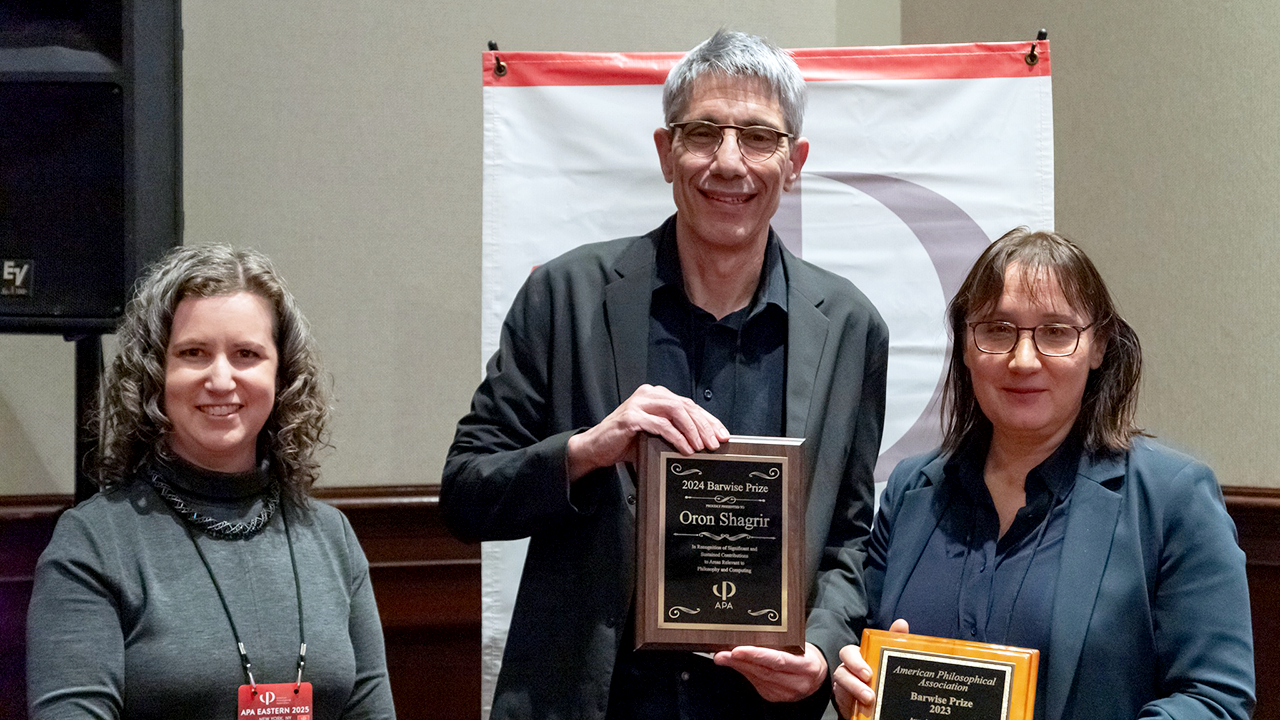
Gabriele Gramelsberger, Professor of Philosophy of Science and Technology and Director of the Käte Hamburger Kolleg: Cultures of Research (c:o/re) at RWTH Aachen University, was awarded the K. Jon Barwise Prize 2023 by the American Philosophical Association (APA) last Thursday, January 9, 2025, in New York.

Photo credits: American Philosophical Association
The award ceremony took place during the 121st annual meeting of the Eastern Division of the American Philosophical Association (the APA also has Central and Western Divisions). The prize, named after the American philosopher K. Jon Barwise, has been awarded since 2002 for significant and sustained contributions to philosophy and computer science.
Gabriele Gramelsberger is the third woman to receive the K. Jon Barwise Award. In her work, she develops a conceptual framework for the Philosophy of Computational Science as well as an open science infrastructure for Computational Science Studies. In 2018, she founded the Computational Social Systems Lab in Aachen, supported by the NRW Digital Fellowship 2017. Together with her team at the KHK c:o/re, Gabriele Gramelsberger will organize the History and Philosophy of Computing conference in Aachen in December 2025.
European Dialogue: Freedom of Research and the Future of Europe in Times of Uncertainty

JANA HAMBITZER
During a day-long symposium, part of the Freedom of Research: A European Summit – Science in Times of Uncertainty, speakers and panelists explored various aspects of freedom of research and the future of Europe in the context of ongoing global crises and conflicts.
“We should not think that freedom is self-evident. Freedom is at danger in every moment, and it is fragile”. With these cautioning words, Prof. Dr Thomas Prefi, Chairman of the Charlemagne Prize Foundation, welcomed the participants of the symposium on freedom of research, which took place at the forum M in the city center of Aachen on November 5, 2024.
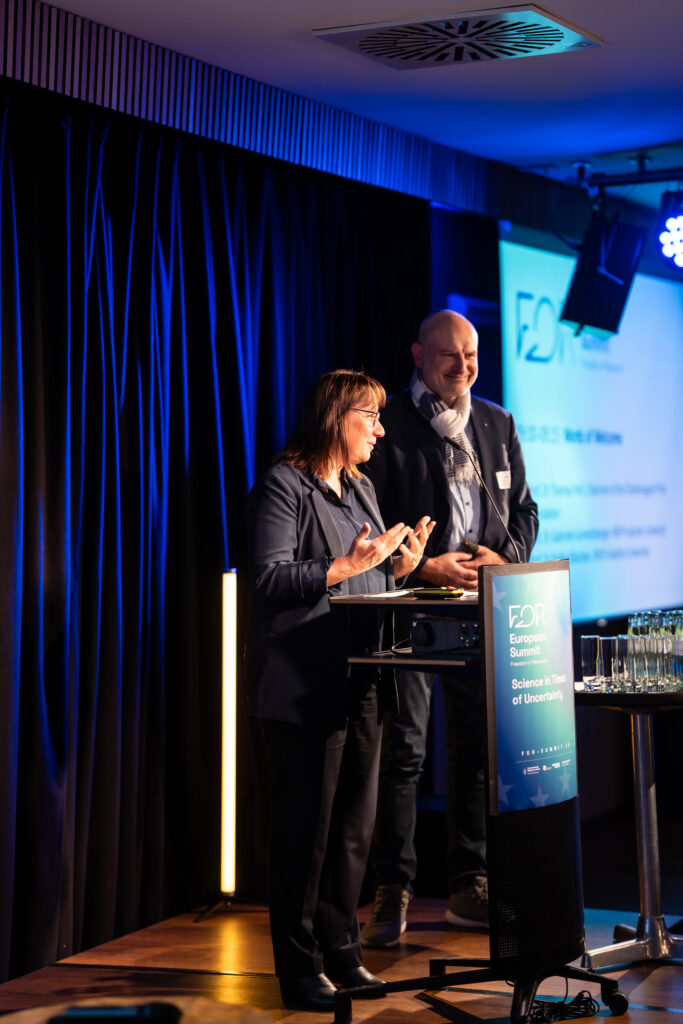
As part of the Freedom of Research: A European Summit – Research in Times of Uncertainty, the Foundation of the International Charlemagne Prize of Aachen, the Knowledge Hub and the Käte Hamburger Kolleg: Cultures of Research (c:o/re) of RWTH Aachen University jointly provided an interdisciplinary platform to discuss the crucial role of freedom in scientific, social and political contexts concerning the future of Europe with researchers, policymakers, business representatives and the public.
The aim was to critically explore different forms and practices of implementing freedom of research in line with European principles and in support of democratic governance and societal benefits. The thematic focus of the symposium was on dealing with the numerous complex crises of our time – from military conflicts to right-wing populism – as well as addressing challenges associated with new technologies such as AI and the metaverse.
Humanity and Collaboration in the Age of Emerging Technologies
The strategic importance of freedom in fostering innovation and maintaining democratic values in a globally competitive landscape was emphasized by Wibke Reincke, Senior Director and Head of Public Policy at Novo Nordisk, and Dr Jakob Greiner, Vice President of European Affairs at Deutsche Telekom AG. From an industry perspective, both speakers underscored the need for open societies that invest in innovation to ensure the continuity and growth of democratic principles.
The emergence of the metaverse and other cutting-edge technologies were discussed by Jennifer Baker, Reporter and EU Tech Influencer 2019, Elena Bascone, Charlemagne Prize Fellow 2023/24, Nadina Iacob, Digital Economy Consultant at the World Bank, and Rebekka Weiß, LL.M., Head of Regulatory Policy, Senior Manager Government Affairs, Microsoft Germany. The panelists pointed out the essential role of human-centered approaches and international collaboration in addressing the ethical and societal challenges associated with new technologies, and in shaping the metaverse according to European ideals.

The inherent tension between technological progress and the preservation of research freedom was highlighted by Prof. Dr Gabriele Gramelsberger, Director of the Käte Hamburger Kolleg: Cultures of Research (c:o/re), who raised the question of how AI is changing research. Prof. Dr Holger Hoos, Alexander von Humboldt Professor in AI and Executive Director of the AI Center at RWTH Aachen University, stated that publicly funded academic institutions must remain free from any influence of money and market pressure to foster cutting-edge research motivated solely by intellectual curiosity. Prof. Dr Benjamin Paaßen, Junior Professor for Knowledge Representation and Machine Learning at Bielefeld University, further argued that AI in research and education should only be used as a tool to complement human capabilities, rather than replace them.
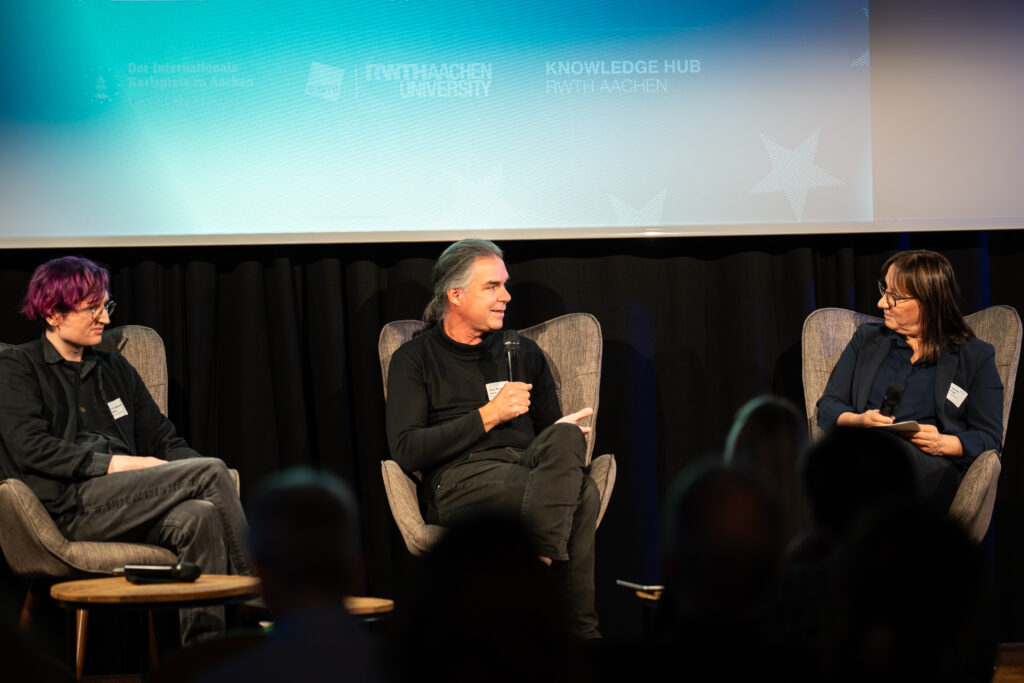
Conflicts over Academic Freedom and the Role of Universities
The de facto implementation of academic freedom worldwide was presented by Dr Lars Lott from the research project Academic Freedom Index at the Friedrich-Alexander-University Erlangen-Nuremberg. In a 50-year comparison, from 1973 to 2023, he illustrated a significant improvement of academic freedom in countries worldwide. However, looking from an individual perspective, the opposite is true: almost half of the world’s population lives in countries where academic freedom is severely restricted due to the rise of populist and authoritarian regimes.
Dr Dominik Brenner from the Central European University in Vienna reported firsthand on the forced relocation of the Central European University (CEU) from Budapest to Vienna and noted that such restrictions of academic freedom are an integral part of illiberal policies. Dr. Ece Cihan Ertem from the University of Vienna provided another example of increasing authoritarianism in academic institutions by discussing the suppression of academic freedom at Turkey’s Bogazici University by the government. Prof. Dr Carsten Reinhardt from Bielefeld University warned of the modern efforts in our societies to restrict academic freedom through fake news or alternative facts. From a historical perspective, these are fundamental attacks destroying the basis of truth finding,
referring to similar developments during the Nazi regime in Germany.
Another pressing issue, the precariousness of academic employment in Germany, was highlighted by Dr Kristin Eichhorn from the University of Stuttgart and co-founder of the #IchBinHanna initiative, protesting against academic labor reforms that disadvantage early and mid-career researchers. She pointed out that the majority of faculty work on fixed-term contracts, which significantly restricts researchers’ ability to exercise their fundamental right to academic freedom due to tendencies to suppress both structural and intellectual criticism.
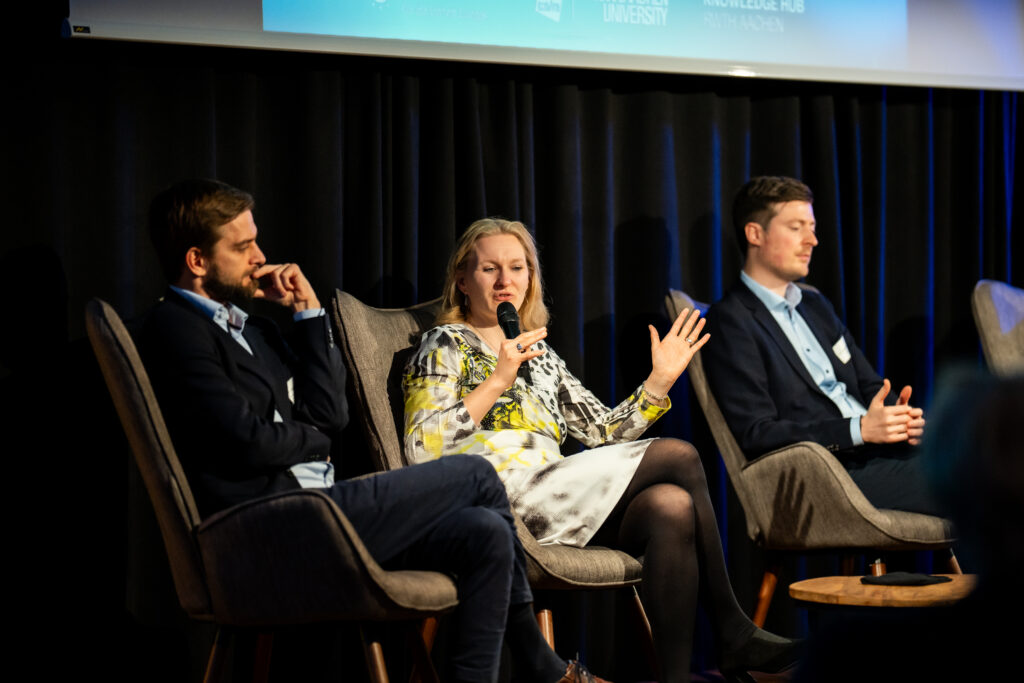
How to deal with these challenges? Prof. Dr Stefan Böschen, Director of the Käte Hamburger Kolleg: Cultures of Research (c:o/re), stressed that political assumptions and politically motivated conflicts can make academic discourse more difficult. However, it is important to foster dialogue once a common basis for discussion has been established. Frank Albrecht from the Alexander von Humboldt Foundation advocated for greater efforts in science diplomacy and the vital role of academic institutions in international relations. Miranda Loli from the Robert Schuman Center for Advanced Studies, the European University Institute in Florence, and Charlemagne Prize Fellow 2023/24, emphasized the need for universities to act as reflexive communities that engage critically with the processes that shape academic freedom while recognizing their potential as informal diplomatic actors.

Research as a Basis for European Conflict Resolution
The intersection of academic freedom and conflict resolution was explored in a discussion between Dr Sven Koopmans, EU Special Representative for the Middle East Peace Process, and Drs René van der Linden, former President of the Parliamentary Assembly of the Council of Europe and Dutch diplomat, moderated by Dr Mayssoun Zein Al Din, Managing Director of the North Rhine-Westphalian Academy for International Politics in Bonn. They argued that research is essential for understanding and resolving global conflicts and emphasized the role of the EU as a key player in international peace efforts. The two discussed the challenges of assessing conflicts from a European perspective, particularly the differing opinions of member states, and highlighted the EU’s economic power as a crucial factor in international peace efforts. Dr Koopmans emphasized the importance of an optimistic outlook, stating: “Let’s work on the basis – that there is a peace that we may one day achieve. It maybe sounds very difficult […], but you know: Defeat is not a strategy for success.”
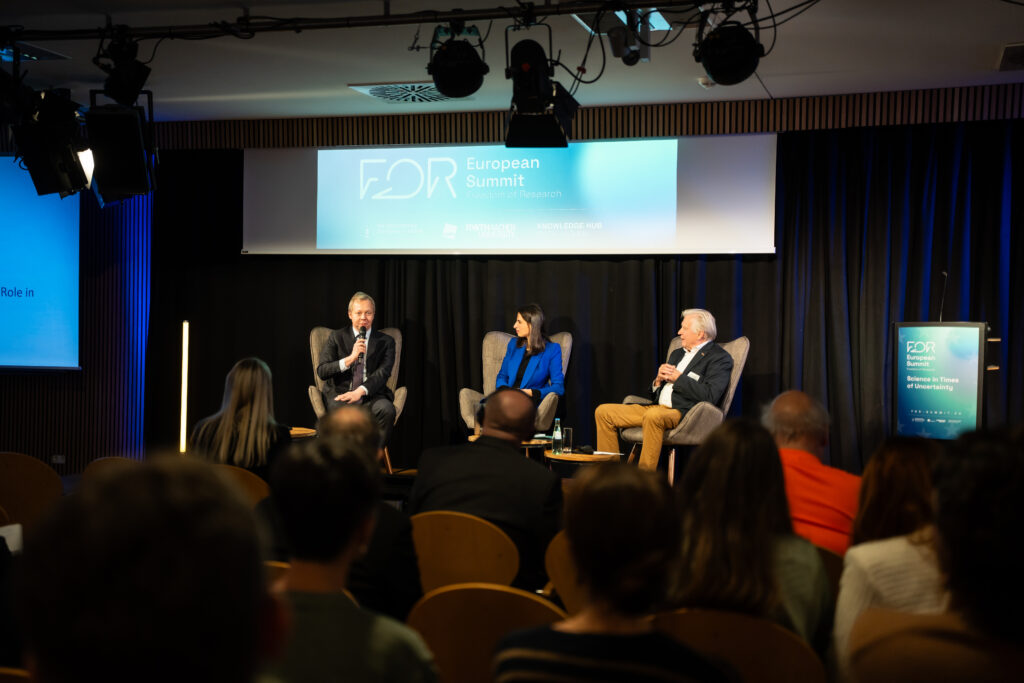
The symposium underlined the critical importance of protecting freedom in research, science, and diplomacy. The discussions made clear that academic freedom is neither given nor a permanent state; rather, it requires continuous vigilance and proactive efforts to preserve. The collective message from the symposium reinforced that science in times of uncertainty can be navigated through regulation and governance for innovation, a strong European and international academic community, and independent universities as safe places to ensure the future of a democratic, secure and progressive Europe.
Photo Credits: Christian van’t Hoen



